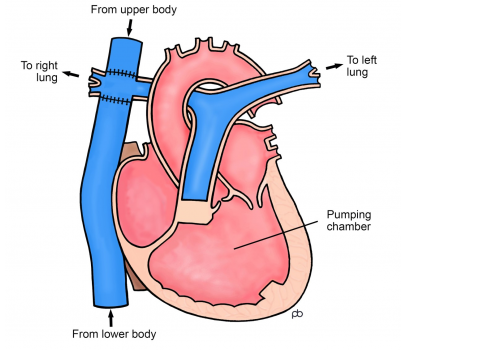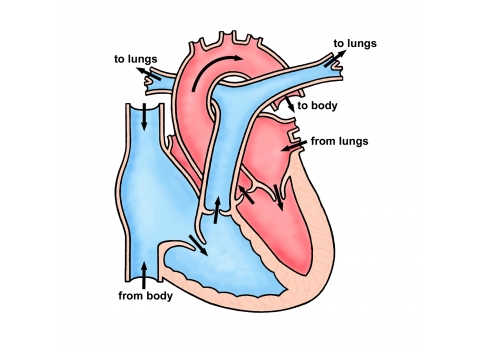Adult
- About
- Meet The Team
- Conditions
- Anticoagulation in Pregnancy
- Aortic Dilatation and Pregnancy
- Aortic Valve Disease
- Aortic Valve Replacement
- Atrial Septal Defect
- Coarctation - Transcatheter stent (keyhole) treatment
- Coarctation of the Aorta
- Congenitally Corrected Transposition of the Great Arteries
- Ebsteins Anomaly
- Eisenmenger’s Syndrome
- Fontan Circulation
- Mitral Valve Repair/Replacement
- Normal Heart
- Patent Foramen Ovale
- Pregnancy information for women with metal heart valves
- Pulmonary Incompetence
- Pulmonary Stenosis
- Pulmonary Valve Replacement - Surgery
- Pulmonary valve replacement - Transcatheter (keyhole) treatment
- Repaired Atrioventricular Septal Defects
- Sub-aortic Stenosis
- Surgical treatment of Atrial Septal Defect
- Tetralogy of Fallot
- Transposition of the Great Arteries - The Atrial Switch (Mustard or Senning) procedure
- Transposition of the Great Arteries – Arterial Switch
- Ventricular Septal Defect
- Ventricular Septal Defect - Transcatheter (keyhole) treatment
- Patient Feedback
- Making the most of your clinic appointment
- Your Appointment in Outpatients
- Easy Read Guide for Out Patients
- Cardiac Catheter
- Transoesophageal Echocardiogram
- MRI
- Surgery & "Top Tips" for coming into hospital
- Lifestyle Advice
- Exercise
- Heart Failure
- End of Life and Palliative Care
- Looking after your oral health
- Dentists Information Section: Dental care in adults at risk of Infective Endocarditis
- Yorkshire Regional Genetic Service
- Support
- Video Diaries
- Second Opinion
- Monitoring Results at Leeds Infirmary
- Professionals
Fontan Circulation
What is the Fontan Operation?
The normal heart has 2 ventricles (pumping chambers). The right ventricle pumps blood that is low in oxygen (blue blood) to the lungs and the left ventricle pumps blood that has lots of oxygen (red blood) to the body.
Sometimes the heart forms with only one ventricle that has to pump blood to both the lungs and the body. When there is only one ventricle the blood pumped to the body is low in oxygen. The Fontan operation is performed on people with these heart conditions.
The aim of the Fontan operation is to separate the blood to ensure that only blue blood goes to the lungs and red blood is pumped to the body. This is done by connecting the veins that carry blue blood returning from the body directly to the lungs. This means that all of the blue blood returning from the body goes to the lungs where it picks up oxygen. Blood that is full of oxygen then goes to the heart and is pumped to the body. The difference to the normal situation is that blue blood gets to the lungs without being pumped there.


What do the operations involve?
The Fontan’s operation has been around since the early 1970s and the surgical techniques have changed, and continue to change significantly over the years. There are, however, three fundamental stages to the operation.
Stage 1- BT Shunt or PA Band or “Balanced” circulation
This happens at the first few weeks of life and depends on the amount of blood flow that reaches the lungs. If the blood flow to the lungs was excessive, a band would have been put around the main lung vessel to control the flow and protect the lungs from high pressure (PA Banding). This would usually happen through an incision at the side of the chest.
If there was inadequate amount of blood reaching the lungs, then a different procedure called a shunt operation would have taken place. This involves taking an artery which usually takes blood to the arm, and diverting it towards the lung vessels (BT shunt). This again would have happened through an incision at the side of the chest.
In a situation where there is “balanced” amount of blood to the lungs, no initial operation is required.
Stage 2- Glenn Operation/ Bidirectional Cavopulmonary shunt
This happens a few months to years later, and it involves diverting the blood returning to the heart from the top part of the body, towards the lung vessels. It involves connecting the superior vena cava (SVC) to the right pulmonary artery.
Stage 3- Fontan completion/ Total Cavopulmonary Connection (TCPC)
This happens some time after the second stage, usually by the end of childhood, but sometimes into early adult life. The operation involves directing the blood returning to the heart from the bottom part of the body towards the lung vessels as well. It is performed by connecting the Inferior vena cava (IVC) to the right pulmonary artery.
Why is long-term follow up needed?
All people with a Fontan circulation require life-long follow up. Complications become more common over time. These include problems with the heart rhythm (e.g. too fast, too slow or irregular), blood clots, liver problems (due to high pressure in the liver veins) and a decline in heart function.
A number of tests may be performed to assess how well your heart is doing and whether any new treatments or procedures would be advised. These include echocardiograms (ultrasound scans of the heart), blood tests, liver ultrasound scans, MRI scans, exercise tests and cardiac catheter tests.
Medicines
People with a Fontan circulation are at risk of developing blood clots. To help prevent these, most patients are routinely prescribed blood thinning medicines, such as warfarin. Other medicines might also be used, for example to help heart function or control heart rhythm problems might also be used.
Pregnancy and contraception
Women with a Fontan circulation can have successful pregnancies, but a number of complications can occur, so careful planning and close monitoring are required. If you are considering pregnancy it is important that you speak to your cardiologist so that you are fully aware of the issues.
Warfarin in particular can be harmful to the baby. Therefore, an alternative form of blood thinning medication may be necessary for certain stages of the pregnancy. If you become pregnant you should let us know as soon as possible.
Women with a Fontan circulation should avoid contraception that contains the female hormone oestrogen, such as the combined oral contraceptive pill. Contraceptives that contain only the female hormone progesterone are suitable, for example the progesterone only pill or the contraceptive implant. Please speak to your doctor or a specialist nurse if you need advice about this.
Lifestyle
Everyone should aim to stay a healthy weight and aim for a BMI of between 20 and 25. This is probably even more important for people with a Fontan circulation to keep your heart pumping well in the long-term. There is some evidence that having good muscle strength can help the blood flow back to the lungs more efficiently. Doing regular exercise to a moderate level, including light-medium weights (maximum 20kg), is good for your overall cardiovascular fitness and for your Fontan circulation. The Fontan circulation relies on healthy lungs so it is very important not to smoke. Staying well hydrated, especially if you are unwell with a cold or other illness is also very important. We can put you in touch with our specialist physiotherapist if you require more advice.
Insurance
It can be difficult for people who have congenital heart disease to get insurance. This can cause problems with travel insurance and also when trying to buy a house or get life insurance. There are some more sympathetic insurers who can be identified and contacted through the Somerville Foundation (www.thesf.org.uk) or ask the specialist nurses for advice.
Other advice
People with a Fontan circulation may have lower than normal levels of oxygen in the blood (oxygen saturations). It is important that you know what is normal for you. We encourage you to keep copies of your clinic letters and your ECG (you could take photos of these on your phone) so that if you ever need to be seen by a different medical team you can give them the correct information. If you need a non-cardiac operation this should be discussed with your cardiologist first.
Written by the Adult Congenital Team.
